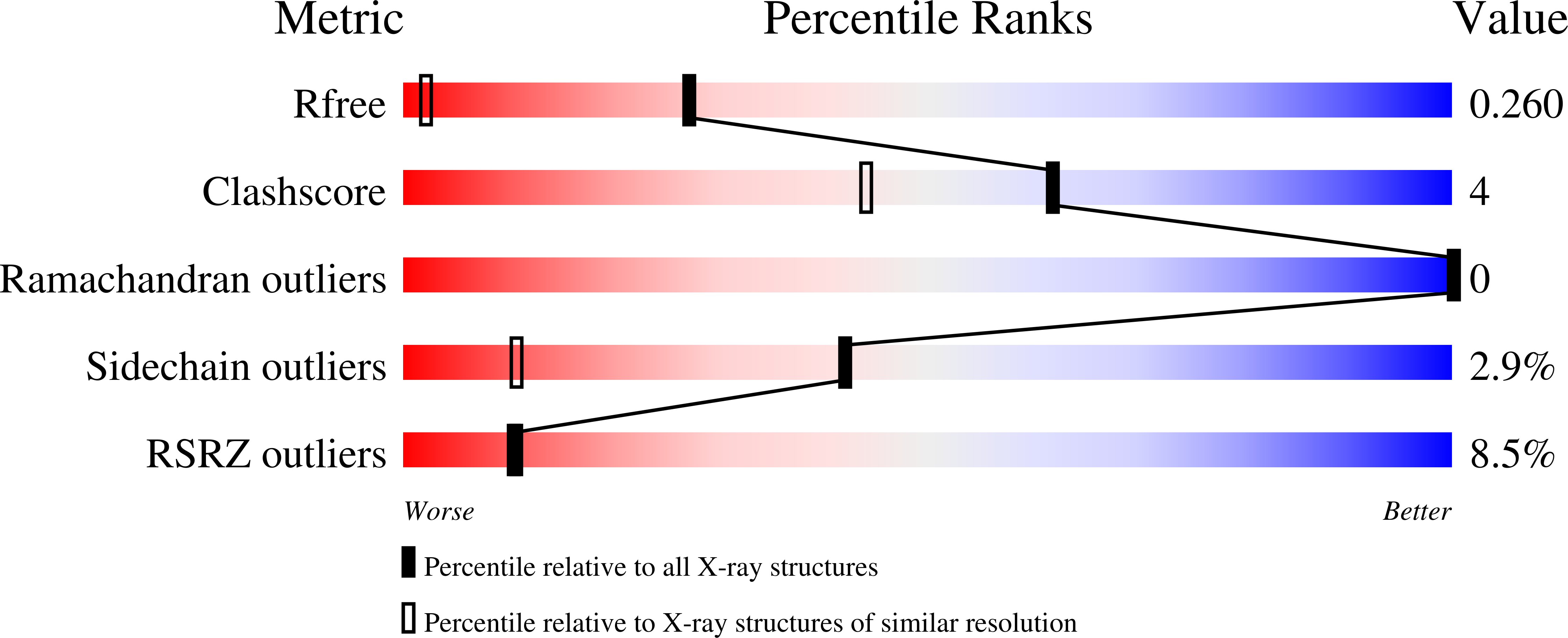Thermostable homologues of the periplasmic siderophore-binding protein CeuE from Geobacillus stearothermophilus and Parageobacillus thermoglucosidasius.
Blagova, E.V., Miller, A.H., Bennett, M., Booth, R.L., Dodson, E.J., Duhme-Klair, A.K., Wilson, K.S.(2023) Acta Crystallogr D Struct Biol 79: 694-705
- PubMed: 37428843
- DOI: https://doi.org/10.1107/S2059798323004473
- Primary Citation of Related Structures:
8B7X, 8BAW, 8BAX, 8BF6, 8BJ9, 8BNW - PubMed Abstract:
Siderophore-binding proteins from two thermophilic bacteria, Geobacillus stearothermophilus and Parageobacillus thermoglucosidasius, were identified from a search of sequence databases, cloned and overexpressed. They are homologues of the well characterized protein CjCeuE from Campylobacter jejuni. The iron-binding histidine and tyrosine residues are conserved in both thermophiles. Crystal structures were determined of the apo proteins and of their complexes with iron(III)-azotochelin and its analogue iron(III)-5-LICAM. The thermostability of both homologues was shown to be about 20ˇăC higher than that of CjCeuE. Similarly, the tolerance of the homologues to the organic solvent dimethylformamide (DMF) was enhanced, as reflected by the respective binding constants for these ligands measured in aqueous buffer at pH 7.5 in the absence and presence of 10% and 20% DMF. Consequently, these thermophilic homologues offer advantages in the development of artificial metalloenzymes using the CeuE family.
Organizational Affiliation:
Structural Biology Laboratory, Department of Chemistry, University of York, Heslington, York YO10 5DD, United Kingdom.


















